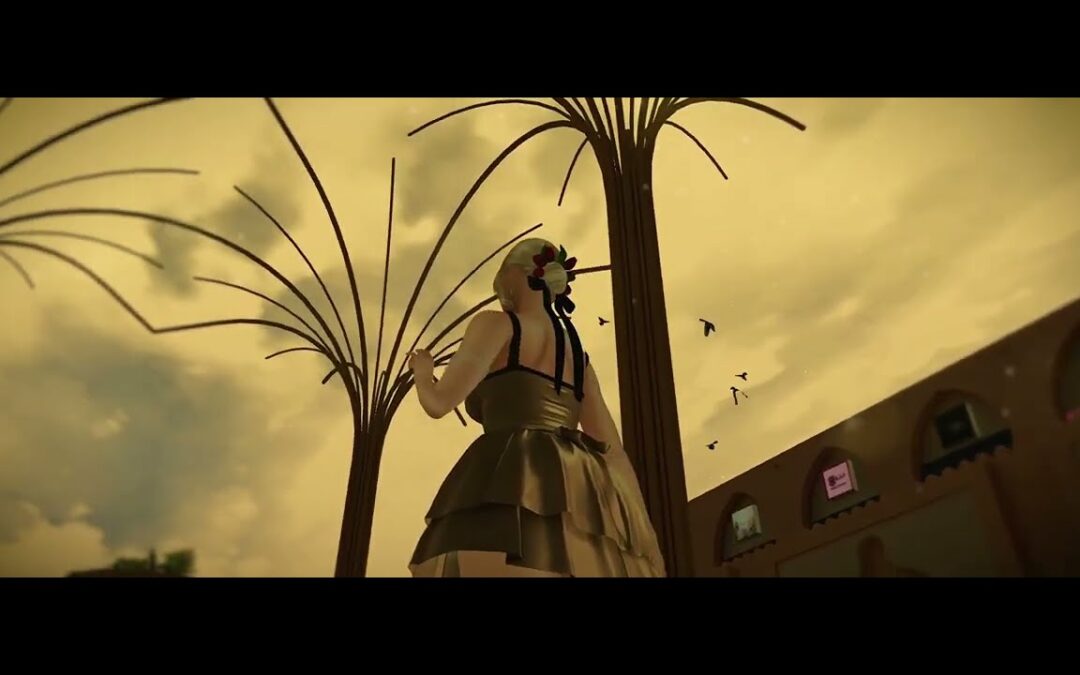
It’s Dubai Event Time!
Dubai Event, one of the most sought-after events, has returned with its October round, promising a thrilling experience for all residents. Here’s everything you need to know about this exciting event.

Dubai Event, one of the most sought-after events, has returned with its October round, promising a thrilling experience for all residents. Here’s everything you need to know about this exciting event.
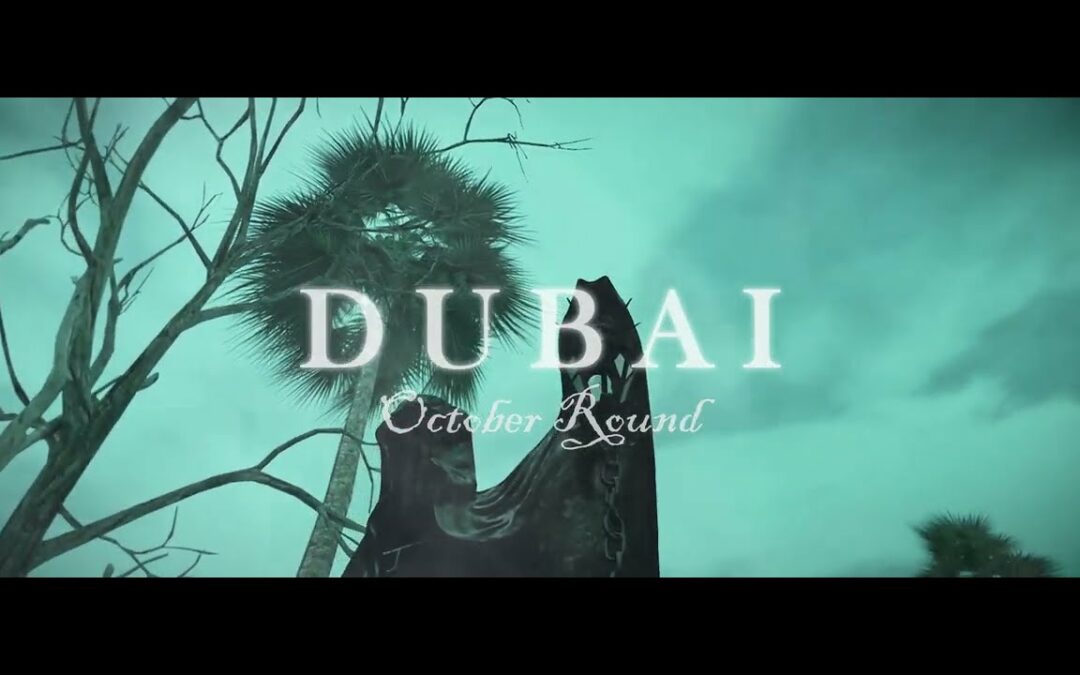
Dubai Event, one of the most sought-after events, has returned with its October round, promising a thrilling experience for all residents. Here’s everything you need to know about this exciting event.
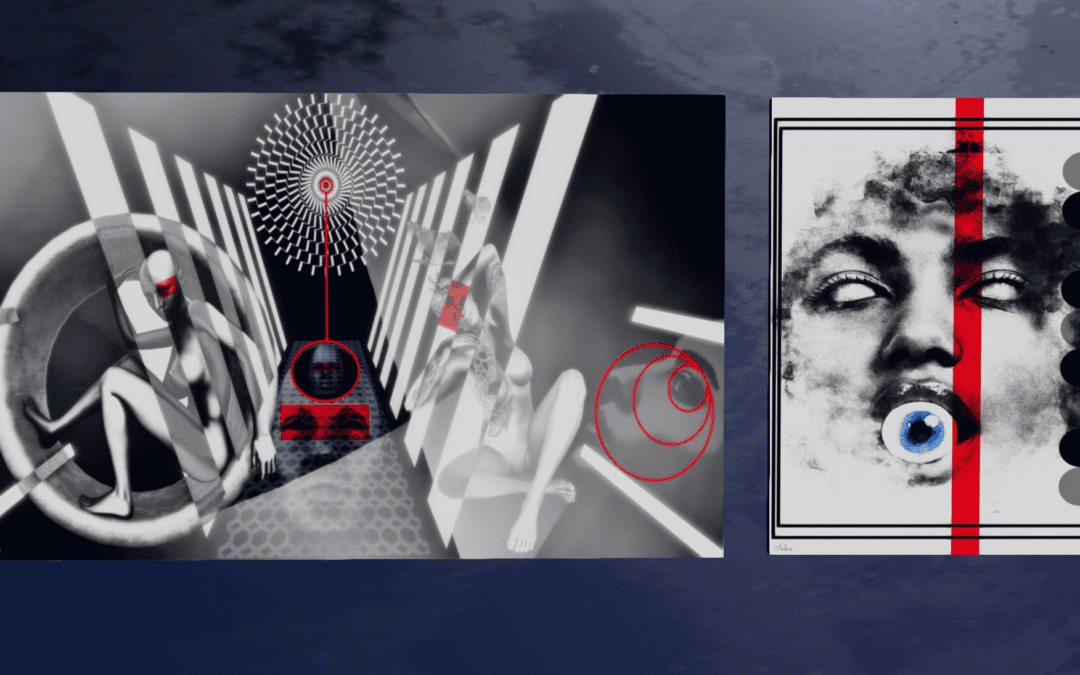
Selen Love’s art, exhibited in the “The Keyhole” show in Second Life, invites us on an introspective journey through the keyhole of perception, where fragmented and reassembled images reveal the hidden depths of the human soul. The artist, with her mastery in manipulating digital technology, creates an immersive experience that transcends the boundaries of the real and the virtual, leading us into a labyrinth of symbols and suggestions.
“The Keyhole” is an exploration of the self, an investigation into the fragility and complexity of identity in the digital age. Through the use of multiple panels that animate and fragment the image, Selen Love creates a kaleidoscopic effect that captures attention and stimulates reflection. The female figures, the undisputed protagonists of her works, emerge from a dark and mysterious background, their faces partially hidden by veils of color and digital distortions.
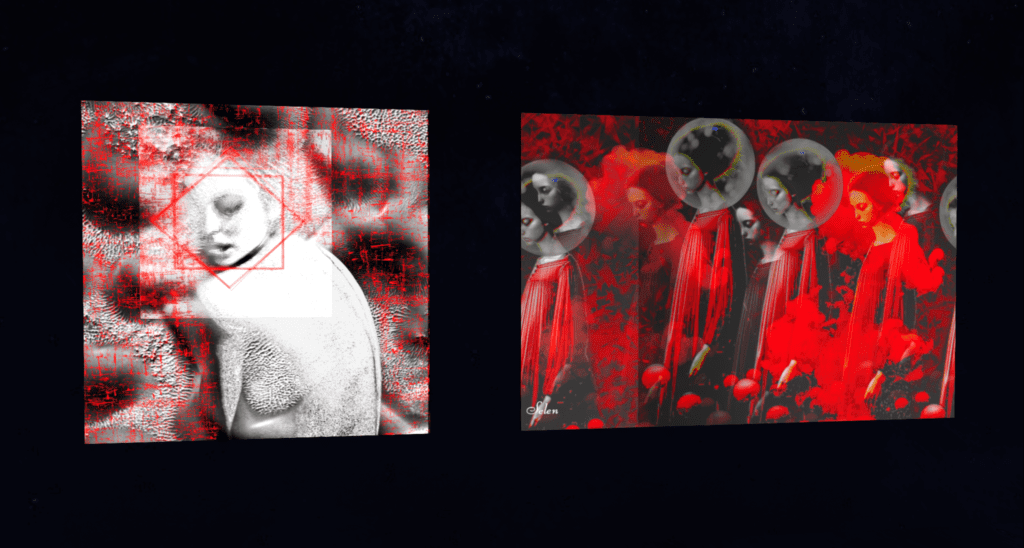
The eye, often placed at the center of the image, becomes the key to accessing this inner world, an invitation to look beyond the surface, to penetrate the deepest layers of consciousness. The gaze of the women portrayed is intense and magnetic, sometimes lost in the void, other times directed directly at the viewer, creating a silent dialogue that challenges and engages.
Selen Love’s technique is a blend of photography, digital painting, and animation. The artist skillfully blends real and virtual elements, creating a hybrid aesthetic that defies conventions and traditional categories. The images, digitally processed, acquire a new dimension, a depth that goes beyond simple representation. Textures, colors, and shapes merge into a continuous flow, generating an effect of movement and transformation.
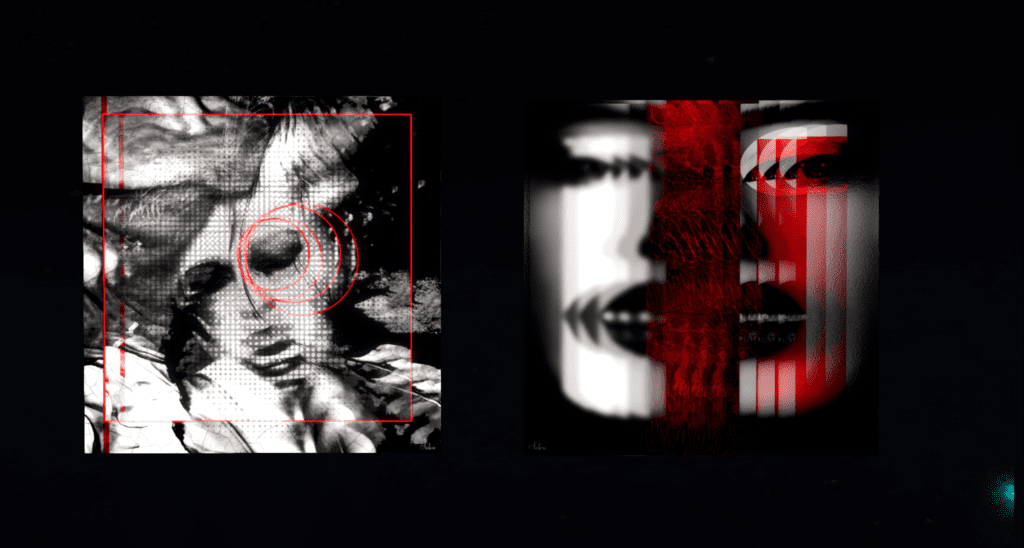
The use of red, dominant in many works, is loaded with symbolic meanings. It is the color of passion, blood, life, and death, a symbol of vital energy and inner strength. But it is also the color of danger, restlessness, and the unknown. In Selen Love’s works, red creeps into the folds of the image, creating chromatic contrasts and accentuating the atmosphere of mystery and ambiguity.
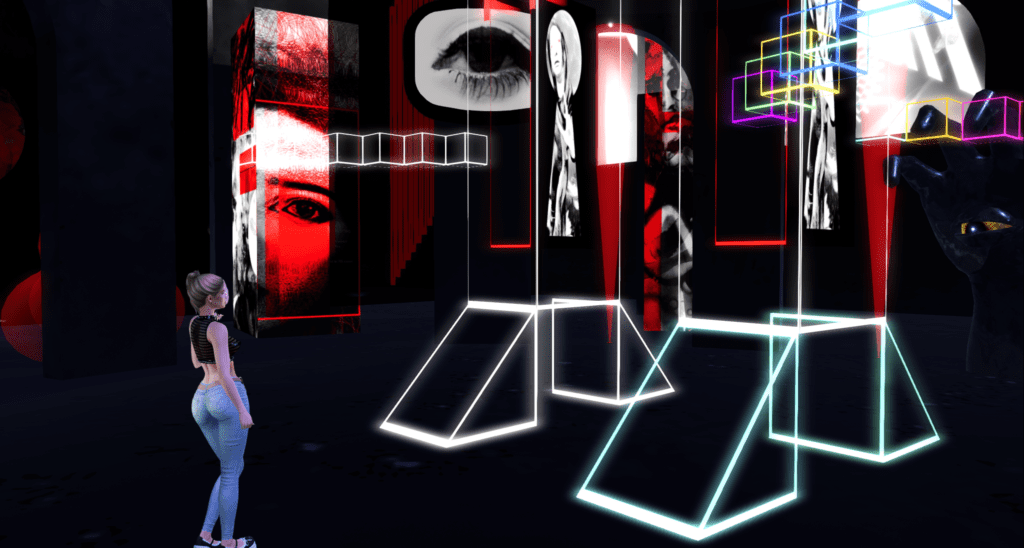
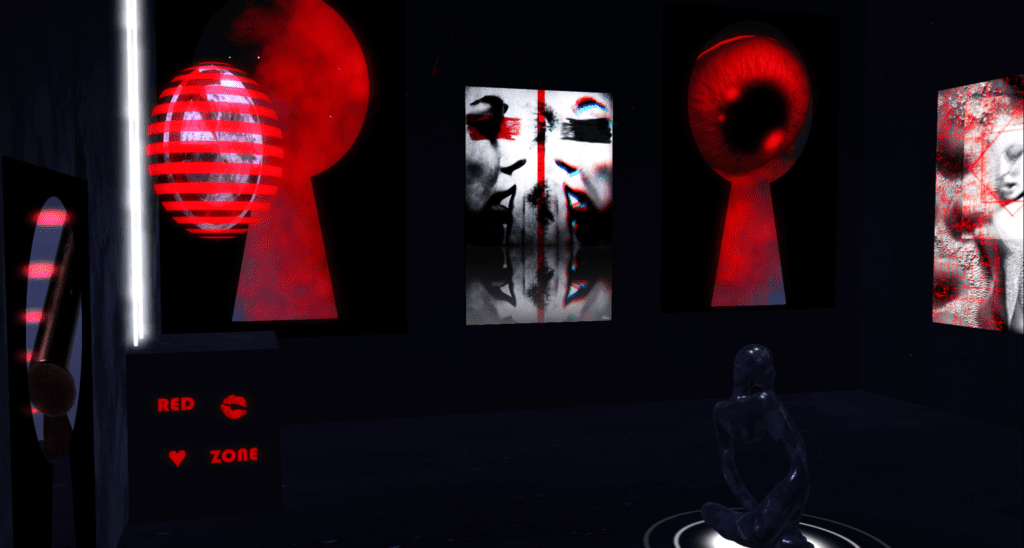
The fragmentation of the image, achieved through the use of multiple panels and digital effects, is a key element in Selen Love’s poetics. It represents the fragmentation of identity in the digital age, the multiplicity of the self, the difficulty of grasping the essence of the individual in a constantly evolving world. The image decomposes and recomposes, creating a game of mirrors that reflects the complexity of the human psyche.
The animation, which gives life to static images, adds a further level of interpretation. The female figures seem to come to life, their faces animated by fleeting expressions, their bodies moving in a hypnotic dance. The animation creates a sense of dynamism and fluidity, underlining the idea of transformation and change.
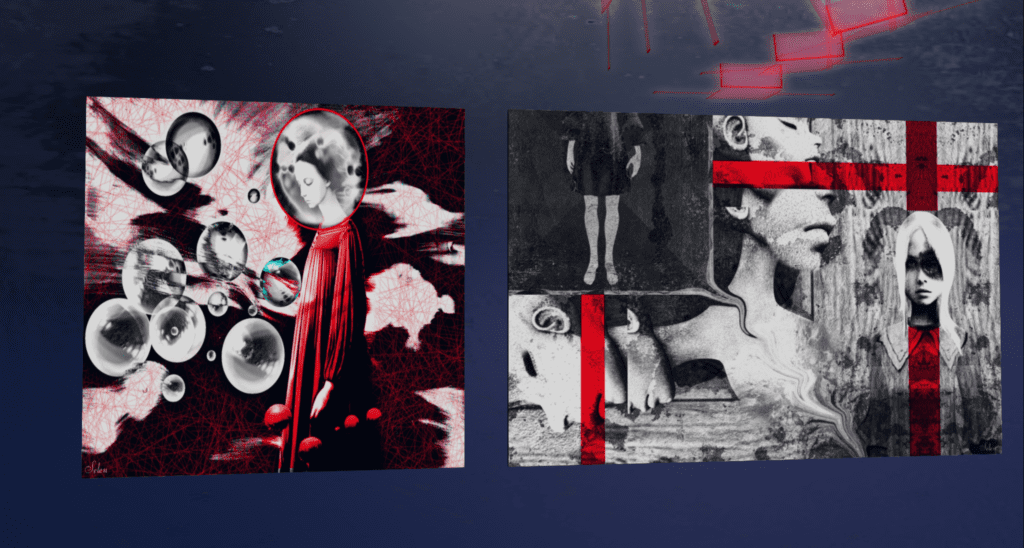
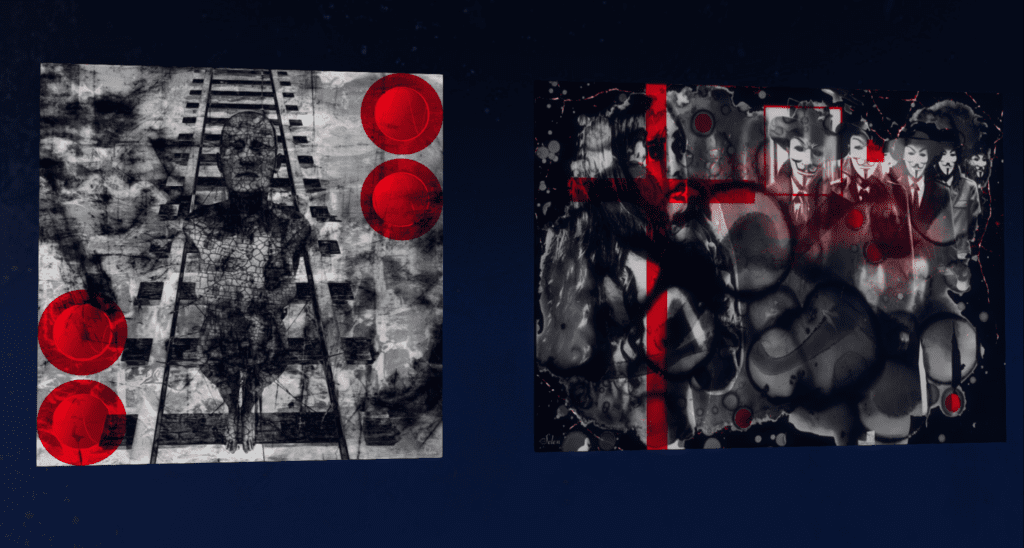
Selen Love’s art is part of the digital art and post-internet art movements, artistic currents that explore the expressive potential of new technologies and reflect on the impact of the internet on society and contemporary culture. But the artist goes beyond simple technical experimentation, using digital as a tool to investigate human interiority, to give shape to emotions, desires, and fears.
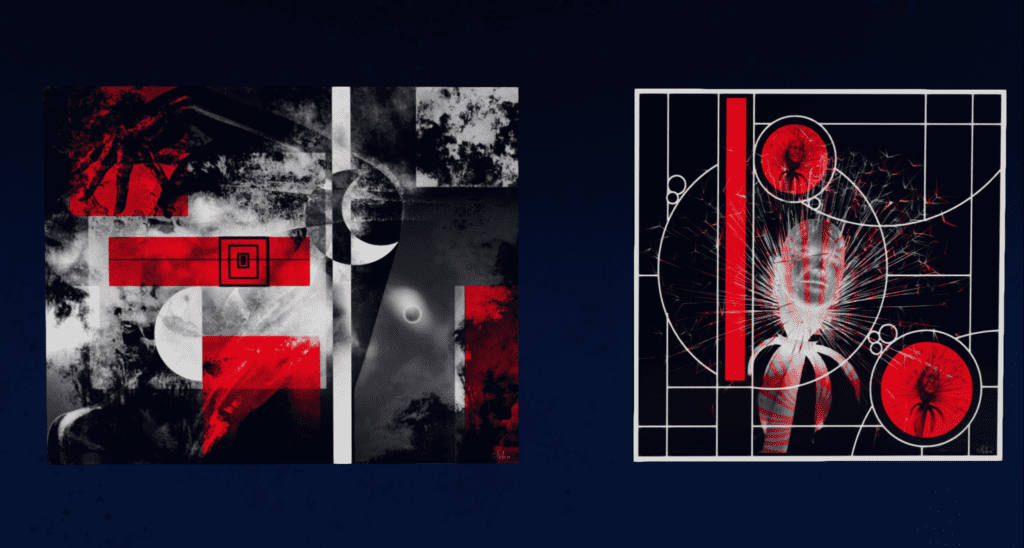
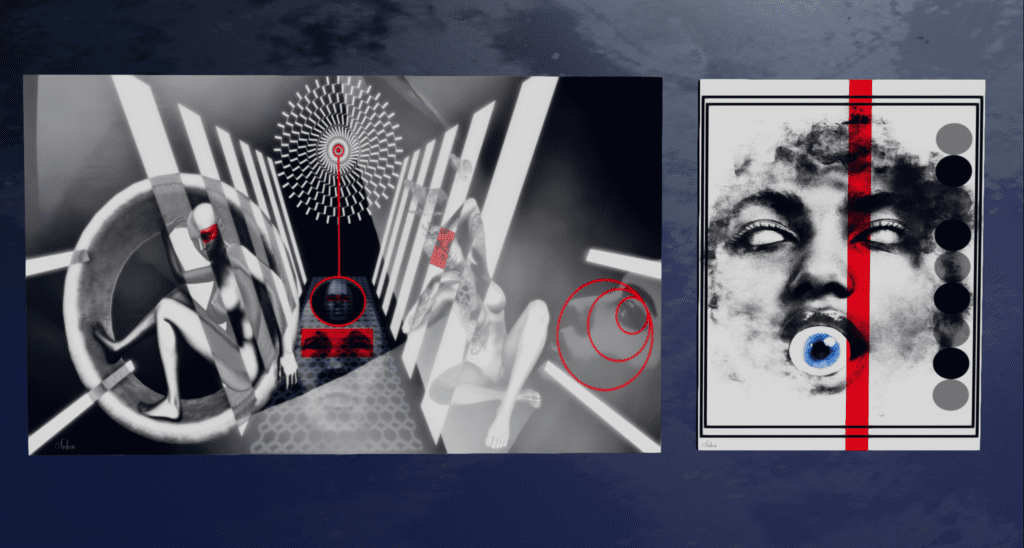
“The Keyhole” is a sensory and emotional experience that engages the viewer at 360 degrees. The images, sounds, and animations create an immersive environment that stimulates imagination and reflection. The observer is invited to enter Selen Love’s world, to get lost in her visual labyrinths, and to decipher her encrypted messages.
Through the keyhole, Selen Love offers us a privileged glimpse of her art, an art that speaks of us, our fragilities, our contradictions, our search for identity in an increasingly complex and fragmented world. An art that invites us to look within ourselves, to unveil the secrets of the soul, to discover the beauty hidden behind the mask.
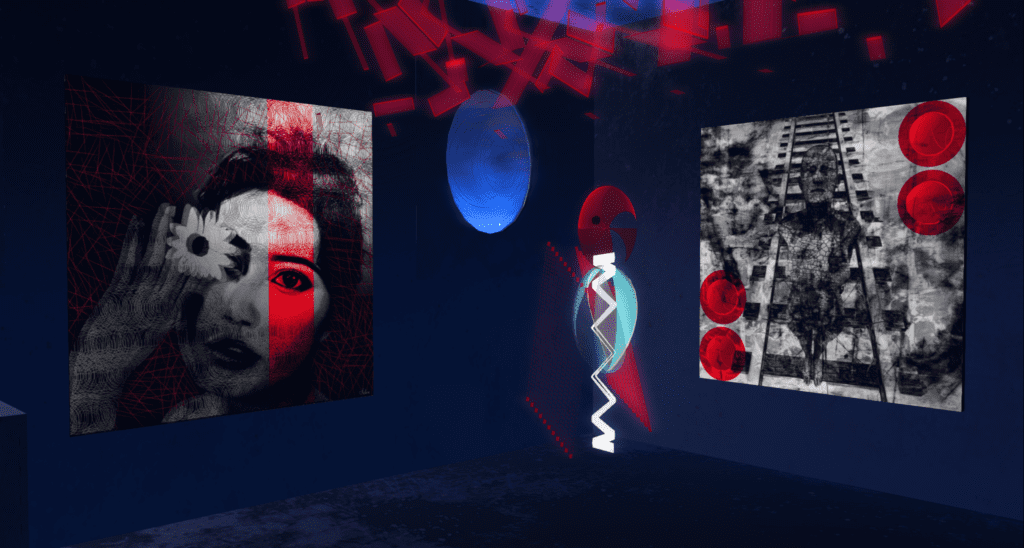
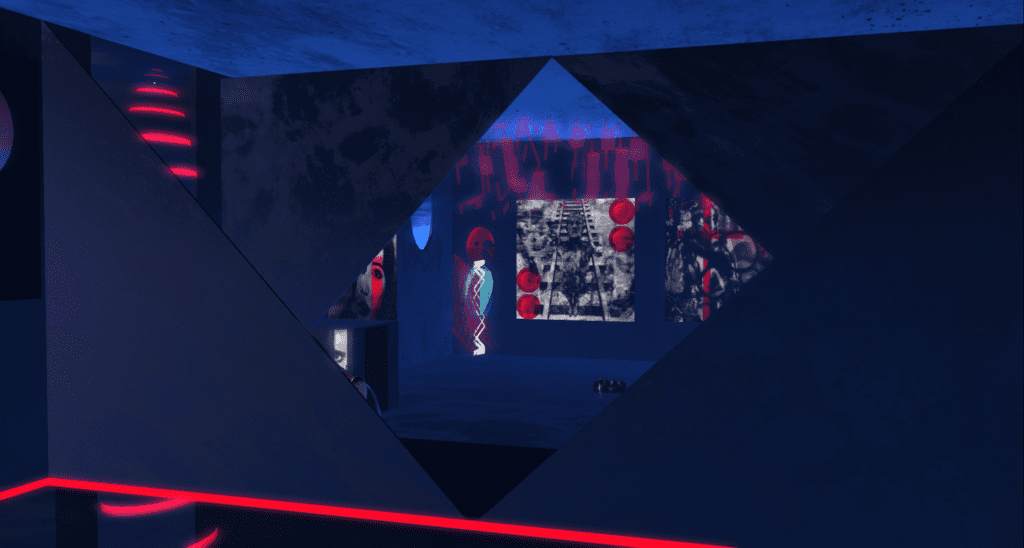
Exhibition: “The Keyhole”
Artist: Selen Love (selen.minotaur)
Location: https://maps.secondlife.com/secondlife/Royale/199/199/3801
Dates: 12/10/2024 – 15/01/2025
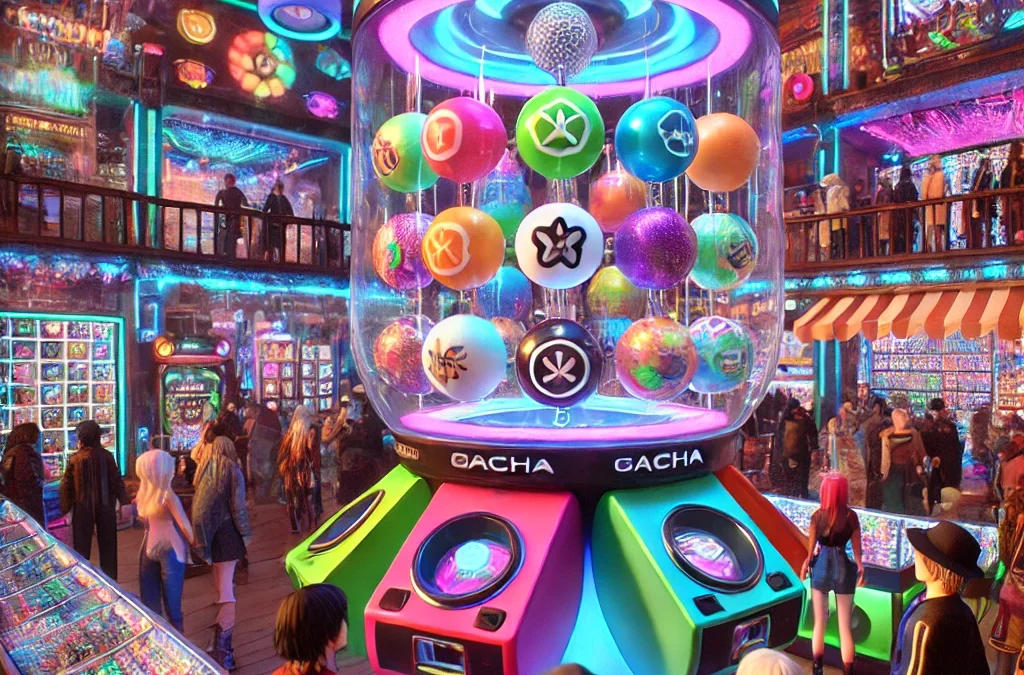
Linden Lab recently announced the return of gacha to Second Life, eliciting mixed reactions from the community. While some users welcome the news, many express concern and disappointment over the new restrictions imposed. The main source of discontent lies in the fact that, starting October 7, 2024, gacha can only contain “copy” items, meaning duplicable, and no longer “transfer” items, which are transferable to other users.
This decision, although aimed at ensuring compliance with legal regulations on gambling, has raised several criticisms. Many users believe that the ability to exchange and resell gacha items was an integral part of the experience, and that the new policy significantly limits the value and appeal of this type of content.
What are the implications of this new policy?
What are the alternatives?
Despite the new restrictions, gacha could still offer interesting opportunities for creators and users. For example, creators could focus on creating high-quality “copy” items with attractive designs, focusing on their aesthetics and functionality rather than their rarity. They could also explore new ways to distribute content, such as selling “fatpacks” or using non-random loot box systems.
Conclusions
The return of gacha in Second Life is certainly a significant event, but the new restrictions imposed by Linden Lab raise several concerns. It will be interesting to see how the community adapts to this new reality and how creators will be able to exploit the opportunities offered by this system, while respecting the new rules. Only time will tell if this new policy will prove to be a success or a failure.
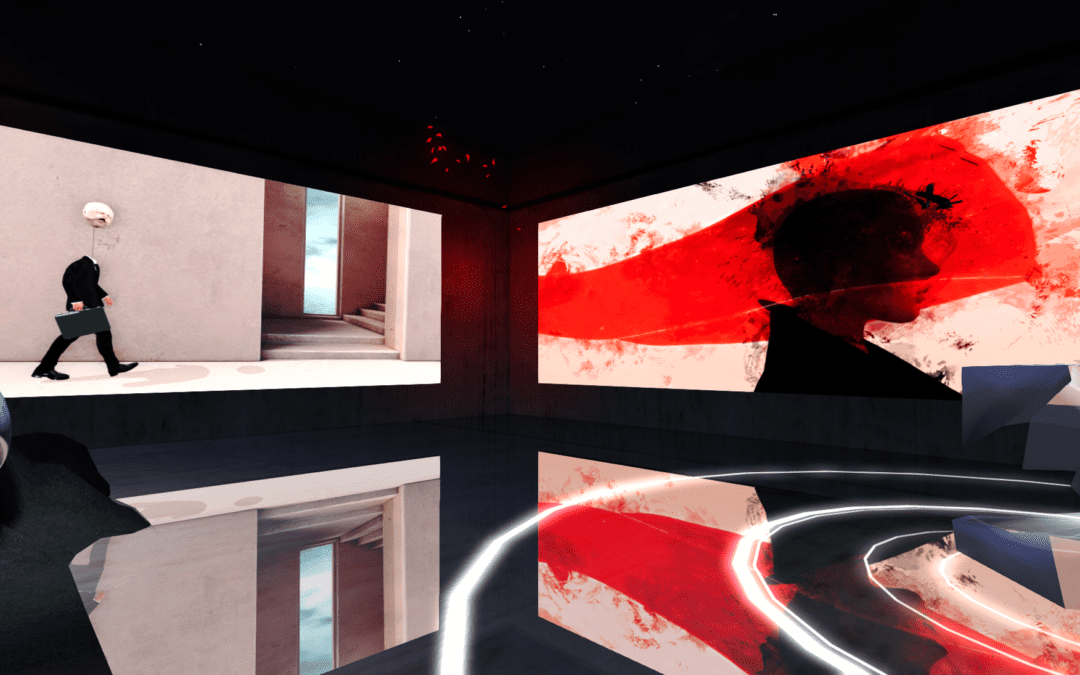
A decade after their initial collaboration, Sina Souza and Sabbian Paine reunite in the metaverse to explore the evolving nature of identity in a masked world
In the virtual realm of Second Life, where the boundaries of identity are fluid and self-expression knows no bounds, artists Sina Souza and Sabbian Paine reunite for a poignant exhibition titled “The Faces We Have Lost.” This collaborative endeavor marks a decade since their first joint venture, “The Masks We Wear,” and revisits the complex themes of identity, masking, and the interplay between the virtual and the real.
Hosted within the digital walls of the renowned Nitroglobus Roof Art Gallery, “The Faces We Have Lost” is curated and presented by the gallery’s owner, Dido Haas. Haas, a prominent figure in the Second Life art scene, has long championed the work of both Souza and Paine, making Nitroglobus the ideal platform for this collaborative exploration of identity. Her keen eye for innovative and thought-provoking art ensures that “The Faces We Have Lost” reaches a wide and engaged audience within the metaverse and beyond.
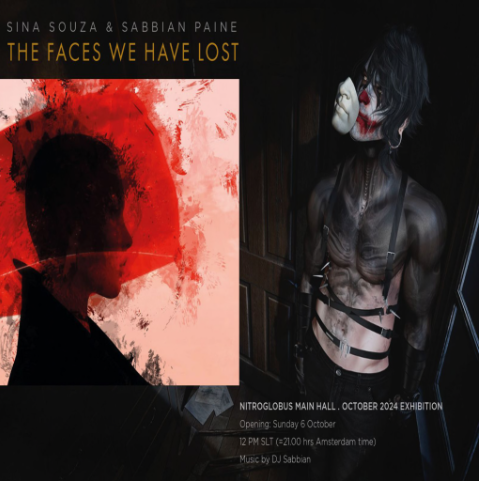
Flyer made by David Silence.
“The Faces We Have Lost” is not merely an exhibition; it’s a dialogue that transcends time and platforms. It’s a conversation between two artists who, ten years prior, explored the masks we wear in a world increasingly reliant on virtual interactions. Now, in 2024, they delve into the faces we have lost, the fragments of our true selves that have been eroded or concealed beneath the masks we adopt for survival, conformity, or escape.
The exhibition’s virtual venue, Nitroglobus Gallery, adds another layer to this dialogue. Second Life, as a metaverse platform, is a space where individuals can experiment with identity, crafting avatars that may or may not reflect their real-world selves. This inherent fluidity of identity within the virtual world makes it a fertile ground for exploring the themes that Souza and Paine address.
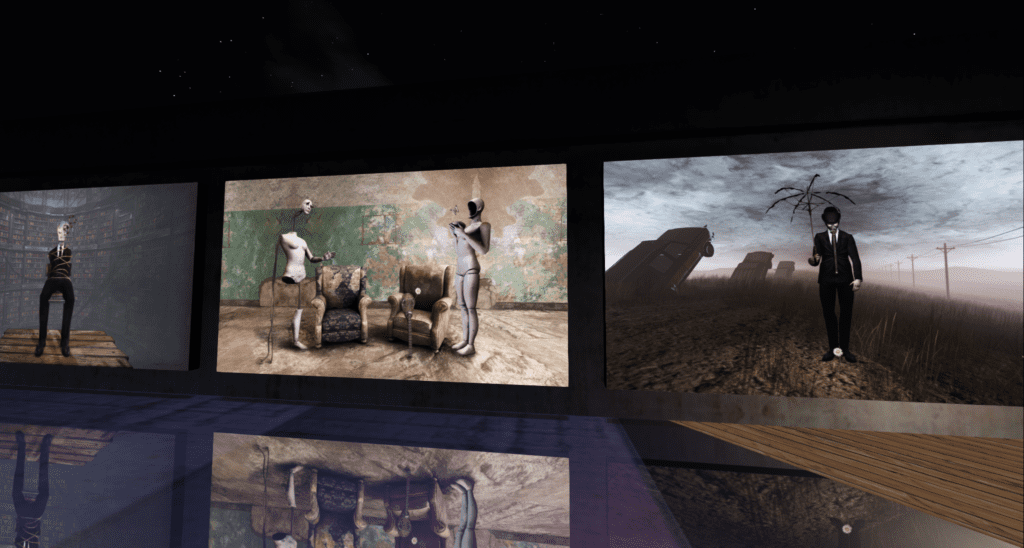
Souza and Paine’s works are a visual feast of surrealism, each piece a window into the fragmented nature of identity in the digital age. Their artistic styles, while distinct, complement each other, creating a harmonious yet thought-provoking exhibition.
Souza’s works are characterized by their dreamlike quality, often featuring figures that seem to exist between worlds, their forms shifting and morphing. Her use of color is bold and expressive, creating a sense of both beauty and unease. Paine, on the other hand, leans towards a more graphic style, his works often incorporating text and symbols that add layers of meaning to the images.
The exhibition’s title, “The Faces We Have Lost,” is a poignant reminder of the cost of masking. In a world where we are constantly bombarded with images and expectations, it’s easy to lose sight of who we truly are. The masks we wear, whether physical or metaphorical, can become so ingrained that we forget the faces beneath them.
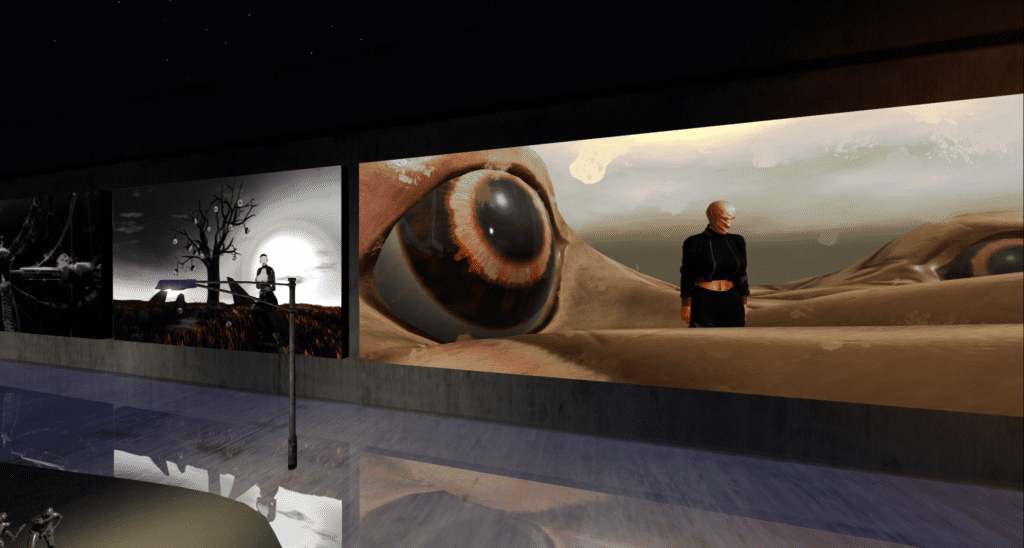
The choice of Second Life as the exhibition’s venue is significant. As a metaverse platform, Second Life allows users to create and inhabit virtual identities, offering a unique perspective on the concept of selfhood. In this virtual world, the lines between the real and the virtual become blurred, and the masks we wear can take on a new meaning.
Souza and Paine’s exhibition invites viewers to consider the ways in which our virtual identities shape our real-world selves. In a world where we are increasingly reliant on technology for communication and connection, the metaverse can serve as both a mirror and a mask, reflecting our true selves while also allowing us to conceal aspects of our identity that we may not wish to reveal.
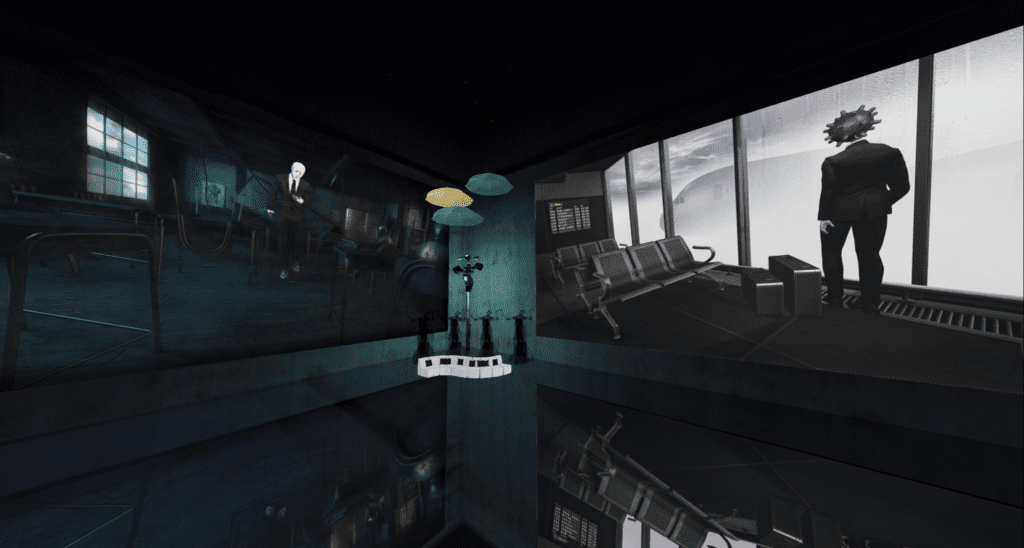
The collaborative nature of “The Faces We Have Lost” is central to its impact. Souza and Paine’s works, while distinct in style, engage in a visual dialogue, each piece responding to and enriching the other. This interplay between their artistic voices creates a dynamic and multi-layered exhibition that invites viewers to explore the complexities of identity from multiple perspectives.
Their collaboration also highlights the power of art to transcend boundaries, both physical and virtual. In a world that is increasingly interconnected, yet often fragmented, Souza and Paine’s exhibition reminds us of the shared human experience, the universal search for identity and meaning in a world that is constantly changing.

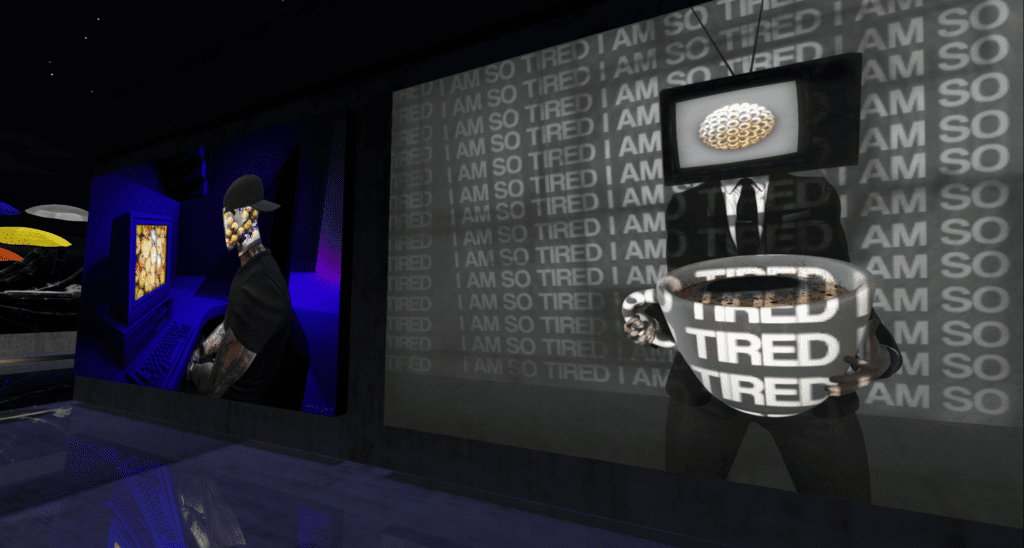
“The Faces We Have Lost” is more than just an art exhibition; it’s a reflection on the human condition in the digital age. Souza and Paine’s works invite us to consider the masks we wear, the faces we conceal, and the fragments of ourselves that we may have lost along the way. In the virtual realm of Second Life, these themes take on a new resonance, as the boundaries between the real and the virtual become increasingly blurred.
This exhibition serves as a powerful reminder of art’s ability to provoke thought, spark dialogue, and connect us to our shared humanity. In a world where we are often masked and fragmented, Souza and Paine’s works remind us of the importance of self-discovery and the enduring search for identity.

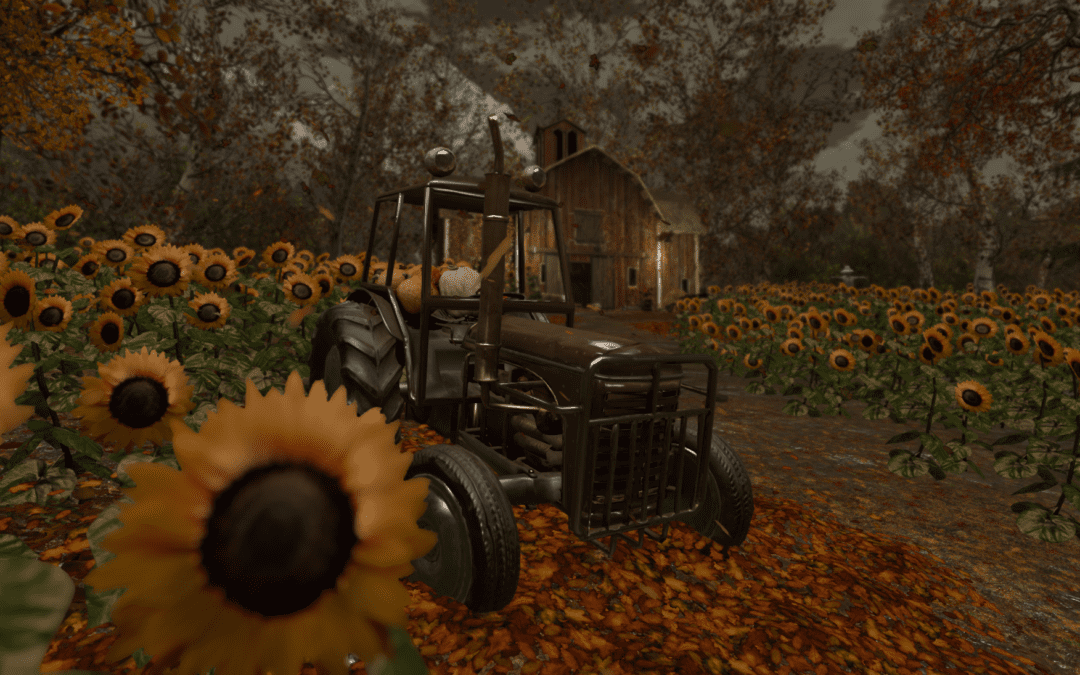
Stepping into Cherishville, the Second Life sim meticulously crafted by photographers Lam Erin and Azaria, is like entering a living canvas. It’s a place where the quintessential beauty of autumn intertwines with a subtle touch of gothic mystique, creating an immersive experience that transcends the visual.
Here, the air is thick with a sense of tranquility and mystery, inviting exploration and quiet contemplation. Towering trees, their leaves ablaze in a fiery spectrum of reds, oranges, and yellows, paint a stark contrast against the muted gray sky. Leaves twirl and dance in the gentle breeze, falling like golden snowflakes to form a soft carpet underfoot.
The quaint village, with its charming stone houses, seems untouched by time. Traditional architecture and carefully chosen details evoke a sense of warmth and belonging, inviting you to imagine the lives lived within those walls.
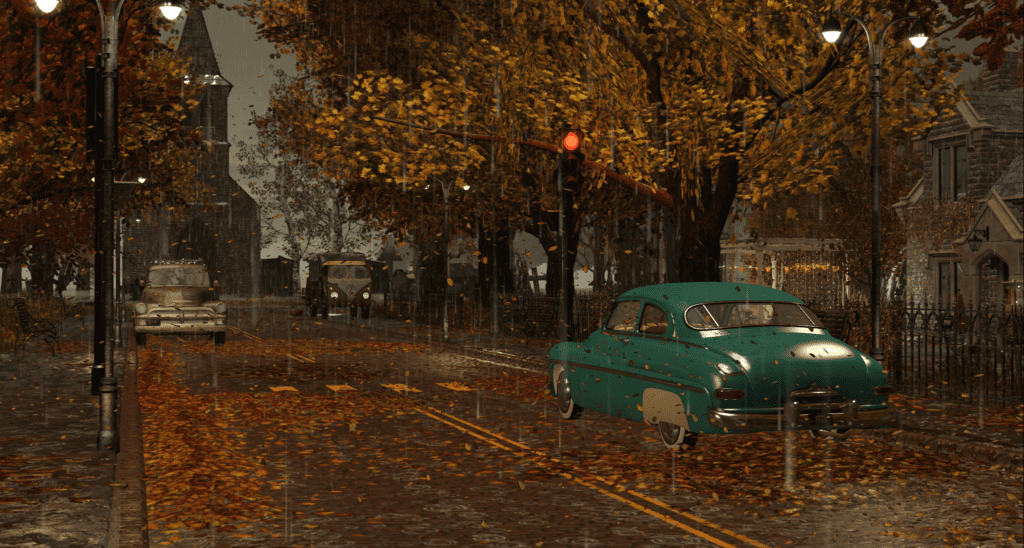
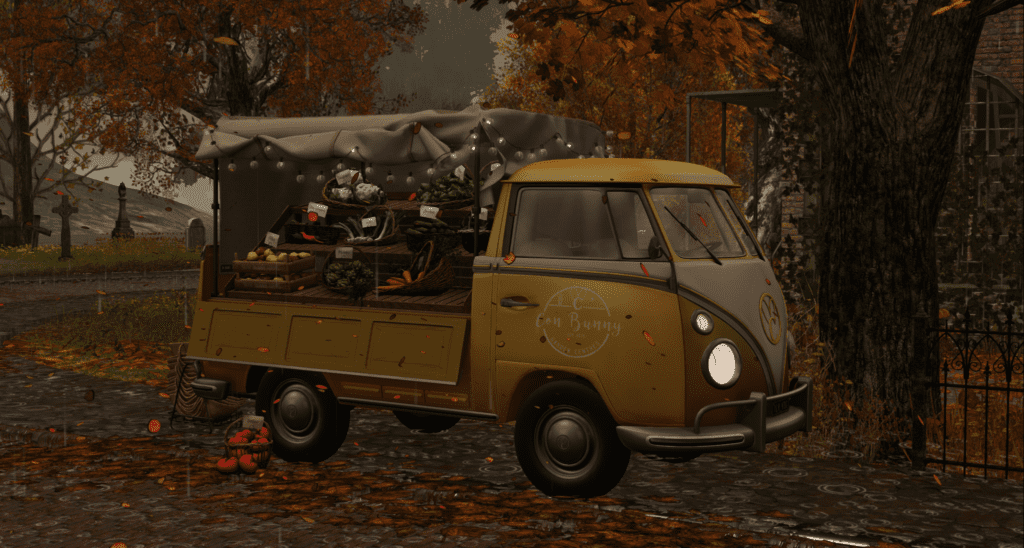
The serene lake, nestled amidst a tapestry of foliage, offers a sanctuary of peace and tranquility. Its glassy surface mirrors the vibrant colors of the sky and surrounding trees, creating a mesmerizing interplay of light and shadow. A weathered wooden pier stretches out towards the center of the lake, beckoning you to pause, breathe, and simply be.
Even the cemetery, with its timeworn tombstones and gothic motifs, is not a place of fear, but rather a space for reflection on the cycle of life and death. The atmosphere is one of solemnity and respect, a poignant reminder of those who came before.
Cherishville is more than just a visual feast; it’s an experience that engages all the senses. The rustling of leaves underfoot, the gentle lapping of water against the pier, the crispness of the autumn air – all contribute to the immersive nature of this virtual world.
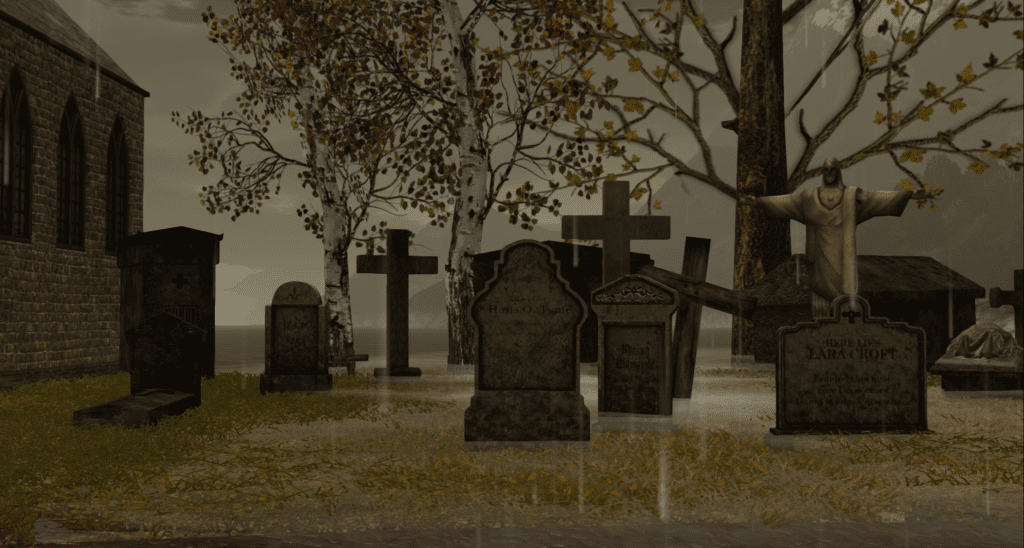
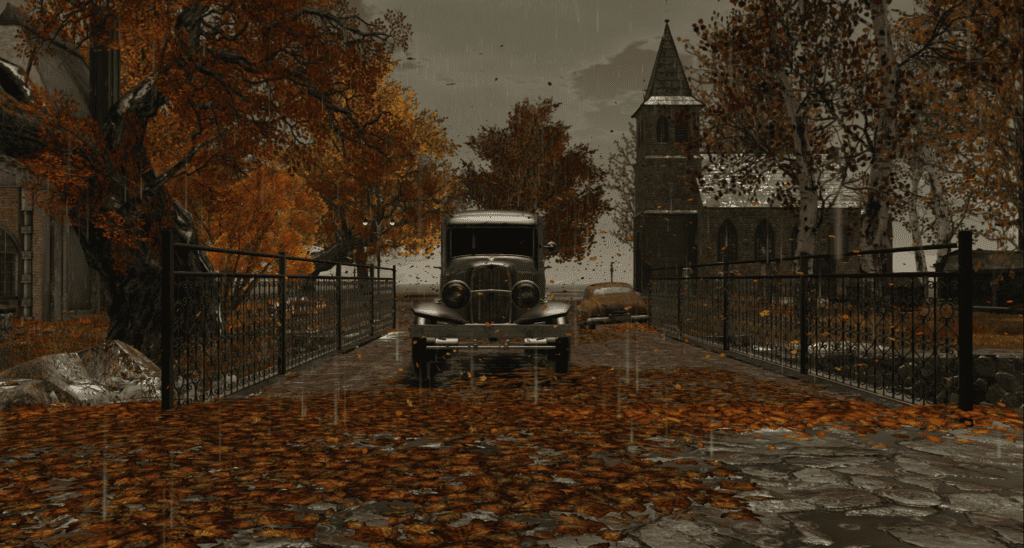
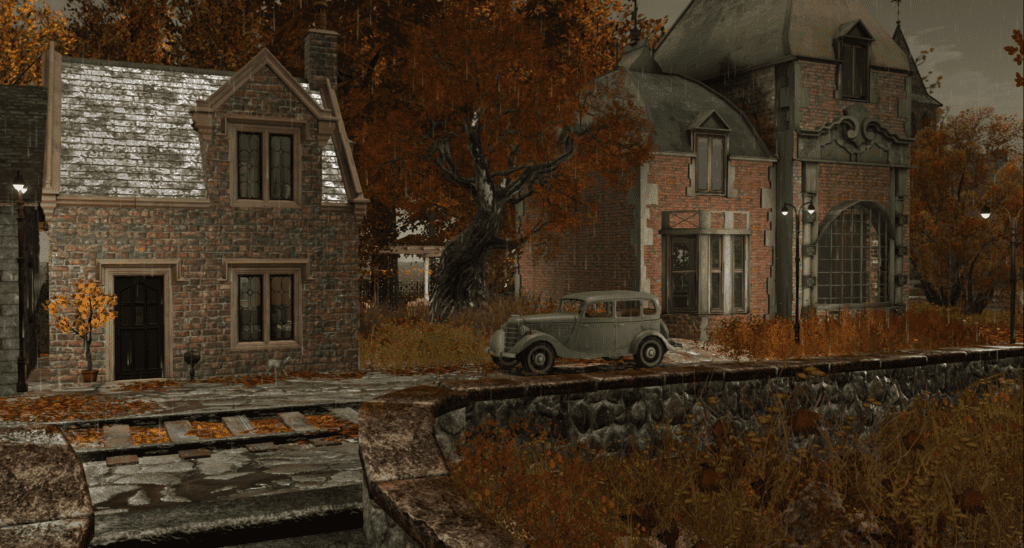
This masterful blend of nature and art is a testament to the creative vision of its creators. Lam Erin and Azaria are both accomplished photographers, renowned for their ability to capture the essence of Second Life. Lam Erin is particularly known for his two Flickr accounts: one dedicated to showcasing the breathtaking landscapes of the virtual world, and another capturing the vibrancy of its lifestyle. Azaria also maintains a captivating Flickr account, filled with striking imagery. Their shared passion for black and white photography is evident in their work, adding a layer of depth and artistry to their portrayals of Second Life.
Every element within Cherishville, from the placement of objects to the subtle nuances of lighting, has been carefully curated to create a truly aesthetic experience. It’s no surprise that the sim is a favorite haunt for photographers, who find endless inspiration in its picturesque landscapes and evocative atmosphere.
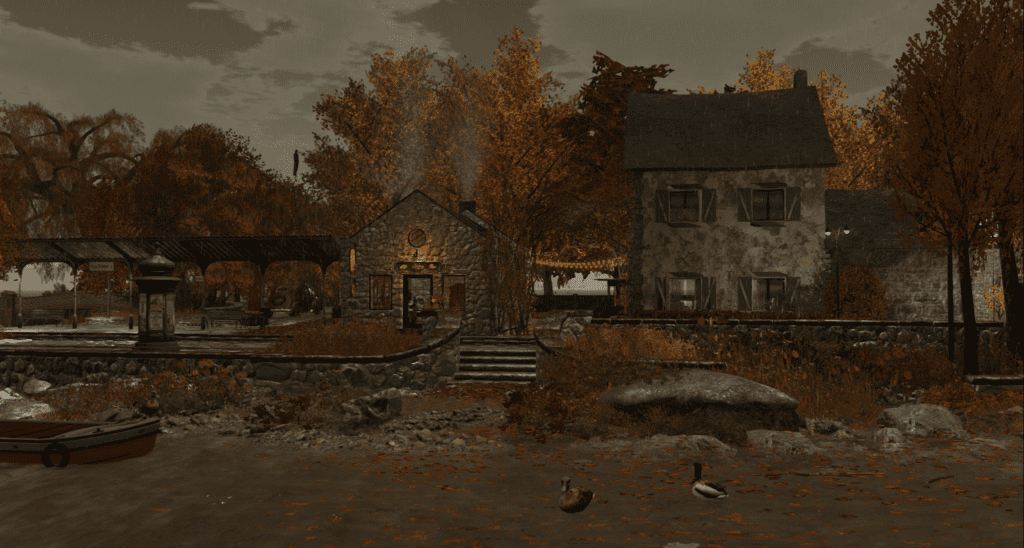
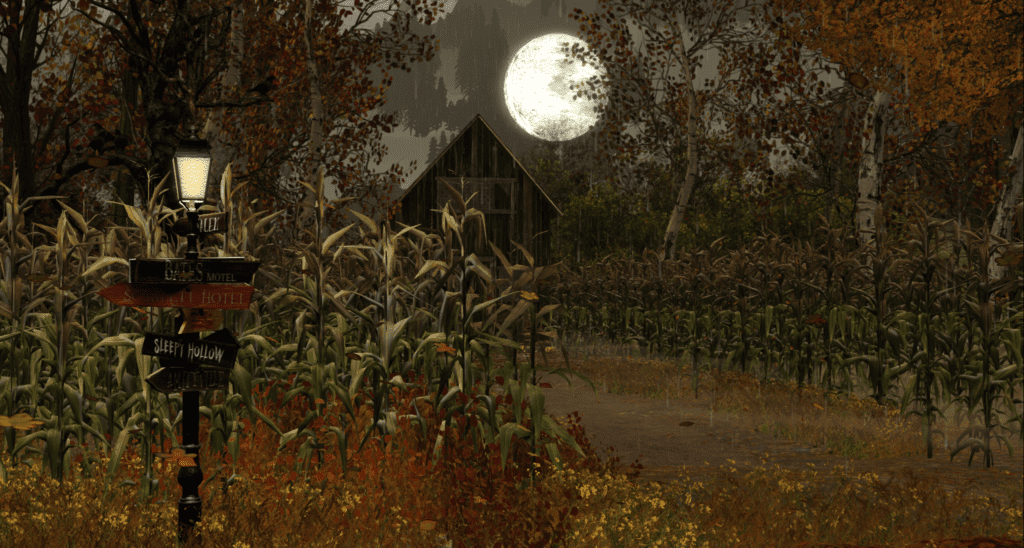
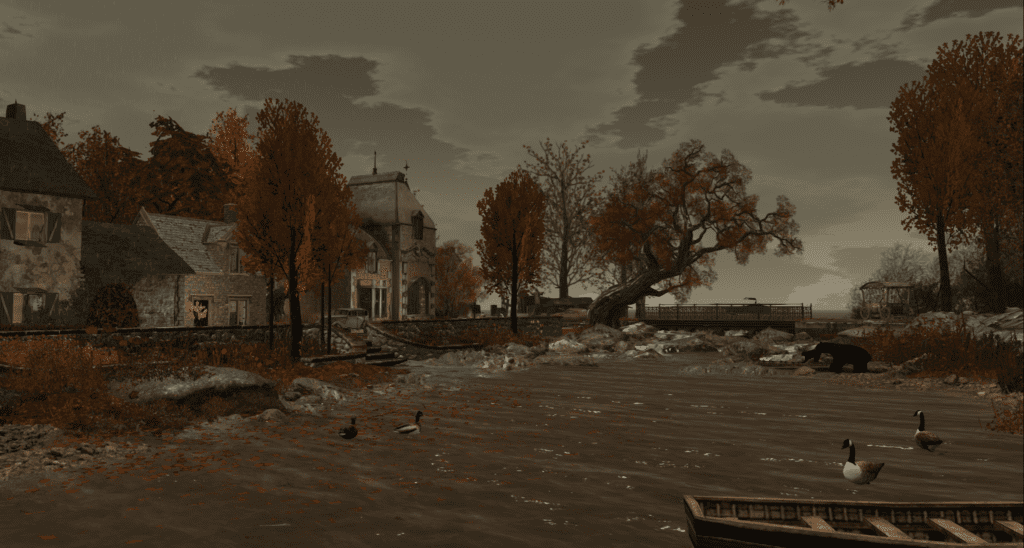
As a photography enthusiast myself, I find myself drawn to capture the beauty of Cherishville. Each photograph is an attempt to bottle the essence of this magical place, to preserve a tangible memory of this experience. Whether framing a shot of the sun setting over the lake, capturing the intricate details of the village houses, or finding beauty in the melancholic stillness of the cemetery, Cherishville offers endless opportunities for creative expression.
But Cherishville is more than just a photographer’s paradise. It’s a place to escape the hustle and bustle of everyday life, to reconnect with nature, and to find solace in its tranquility. It’s an invitation to slow down, to observe, to feel.
Wandering through the winding paths, I find myself drawn to the small details: the way the light filters through the leaves, the gentle sway of the trees in the breeze, the ripples on the surface of the lake. It’s in these moments of quiet observation that the true magic of Cherishville reveals itself.
This is a place to visit and revisit, an experience that lingers long after you’ve logged off. It’s an invitation to lose yourself in the beauty of the moment, to embrace the melancholic charm of autumn, and to discover the hidden depths of this virtual world.of everyday life, to reconnect with nature, and to find solace in its tranquility. It’s an invitation to slow down, to observe, to feel.
Wandering through the winding paths, I find myself drawn to the small details: the way the light filters through the leaves, the gentle sway of the trees in the breeze, the ripples on the surface of the lake. It’s in these moments of quiet observation that the true magic of Cherishville reveals itself.
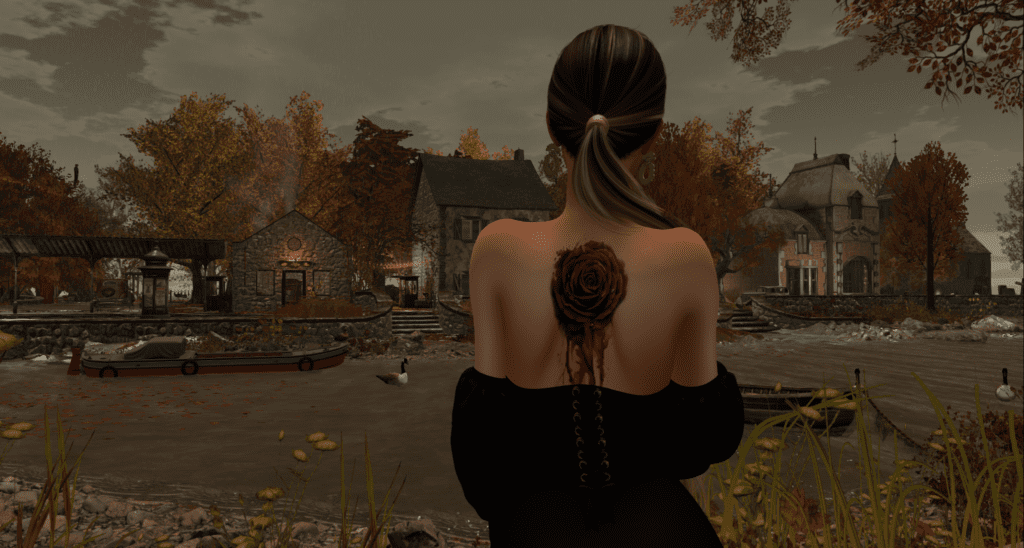
This is a place to visit and revisit, an experience that lingers long after you’ve logged off. It’s an invitation to lose yourself in the beauty of the moment, to embrace the melancholic charm of autumn, and to discover the hidden depths of this virtual world.